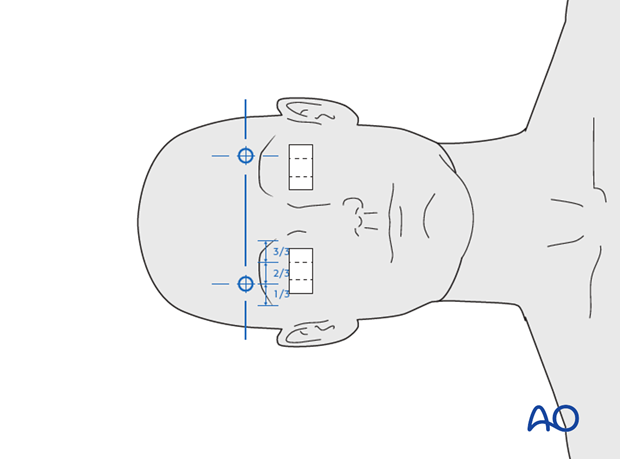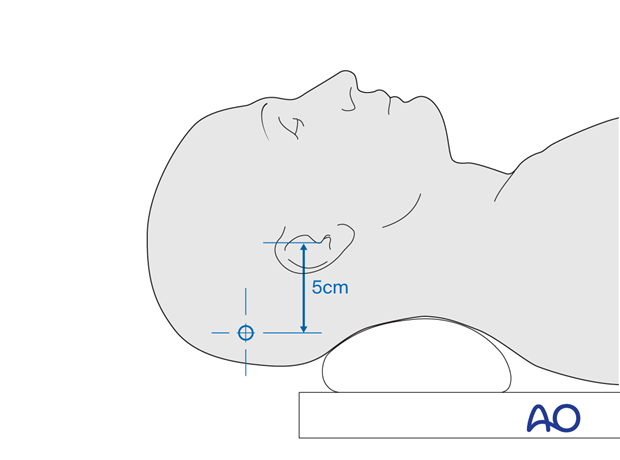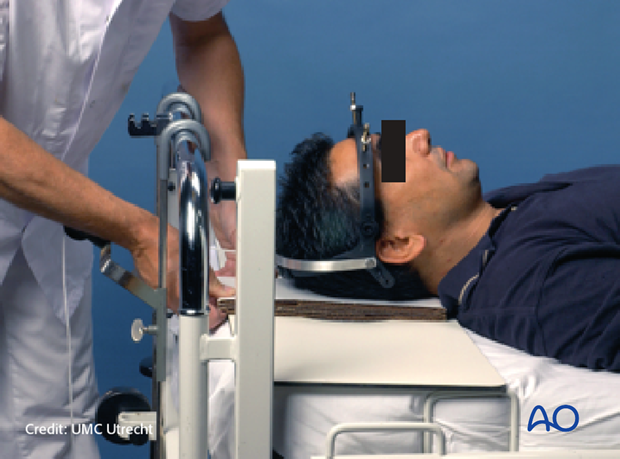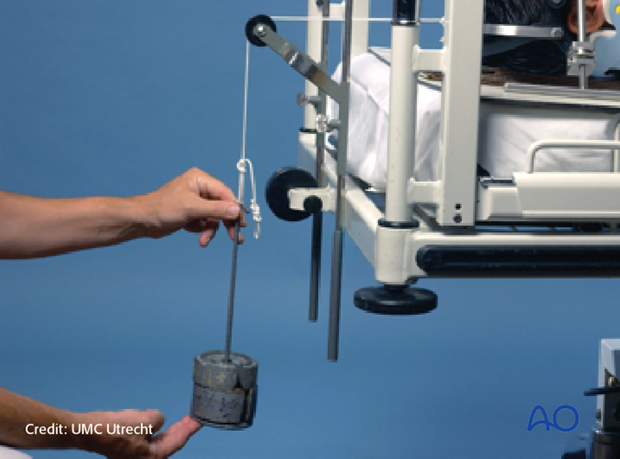Halo vest
1. Introduction
According to the severity of the fracture (comminution, separation, compression), a halo reduction-immobilization may be necessary.
2. Preliminary remark
The halo ring can be used for traction and closed reduction of fractures.
Closed reductions should only be performed in conscious patients.
The halo ring can be placed under local anesthesia in conscious patients. The patient is in a supine position on a stable surface and the head must be accessible so the surgeon can apply the halo.

The halo ring can be connected to the vest to provide stability following closed reduction.
The halo vest has to be sized before the procedure.

3. Halo ring installation
Halo size
The circumference of the patient's head is measured, and an appropriately sized halo ring is selected.
The ring should allow 1–2 cm clearance from the skull.

Temporary halo fixation
The appropriate halo ring is placed with temporary stabilization pins.

Screw placement
Anterior screws are inserted 1 cm superior to the lateral 1/3 of the eyebrows.
The eyelids should be kept closed.

The posterior screws are placed approximately 5 cm posterior to the ear.
Ideally, any posterior screw should be directed toward its contralateral anterior screw and vice versa.
Care should be taken to prevent contact between the halo ring and the ears.

For adults, at least four screws are necessary. For children, 6–8 screws are recommended. The halo ring should be placed inferior to the equator of the skull. If the halo ring is placed above the equator it may become loose and scalp the patient.

Halo fixation
The pin sites are cleaned with a disinfectant, and the skin and periosteum are infiltrated with local anesthesia.
During the insertion of the screws, the eyelids of the patient should be kept closed. If the screws are inserted into the supraorbital rim with the eyelids open the patient may not be able to close the eyelids postoperatively.

Initially, the permanent screws are tightened by hand, followed by the use of a torque screwdriver. Opposing screws are tightened sequentially 1, 2, 3, and 4.
For adults, the maximum torque should be set to 0.56 kg/cm3 and 0.28 kg/cm3 for children.

Reduction
If indicated, a traction kit can be attached at the height of the ears, and the halo ring is used for closed reduction by manipulation. The traction kit allows for a more extended period of traction if necessary.

The following is needed for a traction setup:
- Bed without head plate
- Plate with hole for the patient's head
- Rack with height-adjustable pulley
- Weights (maximum 10 kg)

The patient is placed in the bed with the head in the plate opening.
In patients with thoracic kyphosis, further padding below the head is used to align the cervical spine.
Height-adjustable stabilizing side brackets are placed, and fixed to the caudal side of the ring.
The patient's head is adjusted to extension if necessary.

The bed must be in the anti-Trendelenburg position, to prevent the traction pulling the patient up the bed. The height of the pulley is then adjusted and weights are applied.
Start with 6 kg, increase with 1 kg every 6 hours until a maximum of 15 kg.
Radiograms are recorded after each weight increase to check the reduction and avoid hyperdistraction.

4. Attachment to halo vest
After reduction is achieved and confirmed on x-rays, the halo ring is attached to a halo vest. Maximum stability is achieved when rods are symmetrical and parallel.

Postoperative x-ray control
X-rays are performed, and the position of the spine is checked.
Screw site care
As the screws loosen over time, they should be re-torqued after 24 hours, 3 days, and then weekly until the halo is removed.
Screw sites should be cleaned daily and the screws replaced in case of loosening or signs of infection.














